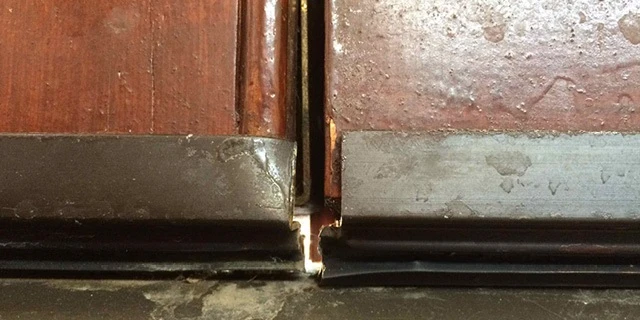As temperatures drop outdoors, you’re likely cranking up the heat indoors. In the interest of comfort and coziness, you’re more than willing to do so. However, you might be unknowingly losing some of that heat (and money!) to the cracks and leaks in your home.
According to HouseLogic, a typical family spends about one third of their heating and cooling budget on air that leaks out of the house. Don’t allow precious warmth to escape your home this winter! Use these tips to check the seals on your windows, doors and vents.

Identify the Leaks
More often than not, you don’t need fancy equipment to identify a leak in your home! Learn how to use these readily-available tools to identify leaks and seal them fast.
- Hand check – Use your hand to hover over windows, doors and vents. If you feel cold air coming through, you have a leak. This method is best for finding large leaks.
- Candle check – Shut off your air conditioning/heating unit and place a lit candle near the potential leak. If the light “dances,” you have a tiny leak.
- Air detector – This one’s for the tech-savvy! An air detector is a small, handheld machine designed to quickly identify leaks. Most models will change color (blue or red) depending on the temperature of the air it identifies.
Seal the Leaks
So, you’ve found a leak or two – now what? Not only will sealing your leaks help keep good air indoors, it will keep humidity, bugs and dust outdoors. Check out these techniques and materials for plugging the holes in your home.
- Caulking is perfect for filling the small gaps. There are several types of caulk to choose from, but silicone caulk is most common. You can purchase caulk in spray cans, squeeze tubes and caulking guns with disposable cartridges. Be careful! This expandable foam is tough to remove from clothes and skin.
- Weatherstripping is great for sealing leaks in doors and windows. Be sure to install weatherstripping snugly against both surfaces. In addition, be sure your surfaces are clean and dry upon installation.
- Adding a storm window to single-pane windows can help keep good air inside. If you’re looking to nip the problem in the bud, consider upgrading your single-panes to double-pane windows. We know a Neighborly brand that can help!
- Be sure that vents, like your gas-fired water heater vent, are sealed with something fire resistant. Acceptable materials may include sheet metal and furnace cement caulk.
Ready to stay warm and save money this winter? Use this guide to identify you air leak areas and seal them up fast. For more home advice, visit our Neighborly Expert Tips page.



 Back
Back
 1 (855) 217-8437
1 (855) 217-8437


